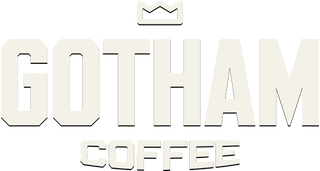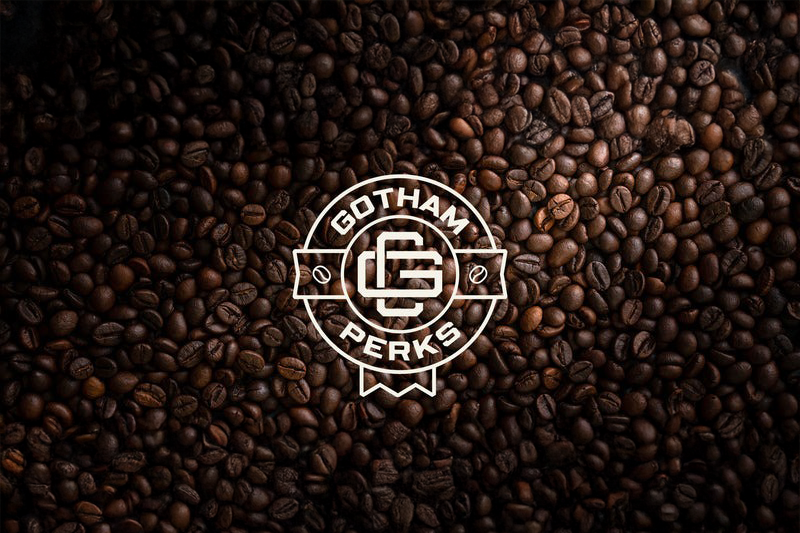When it comes to brewing the perfect cup, your choice of coffee beans is only half the story - grind size plays a starring role too. Whether you're making a rich espresso or a mellow French press, using the correct grind size can be the difference between a great brew and a disappointing one.
At Gotham Coffee, we offer a 8 different coffee grind sizes to match every popular brewing methods method, and we’re here to help you get it just right.

Why Does Grind Size Matter?
Grind size affects how quickly water passes through the coffee, which in turn impacts flavour extraction. A grind that's too fine can over-extract and taste bitter; too coarse, and you’ll end up with weak, under-extracted coffee. Different brewing methods require different grind sizes to ensure a balanced, flavourful cup.
So whether your cup of coffee of choice is a coarse cafetiere grind or a finer stovetop espresso grind, let’s break it down.
Different Types of Coffee Bean Grinders
Choosing the right coffee grinder is a vital step for any at-home barista looking to elevate their brew. Whether you’re crafting a delicate pour-over or pulling a bold espresso shot, the grinder you use can make a noticeable difference in flavour, aroma, and consistency.
Here’s a breakdown of the main types of coffee grinders available and suitable for home use.
Blade Grinders
Best for: Budget-conscious beginners
Blade grinders use a fast-spinning metal blade (similar to a blender) to chop coffee beans into smaller pieces. While they're affordable and easy to use, the grind size is inconsistent, which can negatively affect the flavour profile—especially for espresso or filter coffee.
- Pros: Inexpensive, widely available
- Cons: Uneven grind, generates heat which may affect flavour
Burr Grinders
Best for: Serious coffee enthusiasts seeking consistency
Burr grinders crush beans between two abrasive surfaces (burrs), ensuring a much more uniform grind. These are generally considered the gold standard for home brewing.
- Pros: Precise grind size control, consistent results
- Cons: More expensive than blade grinders
Manual (Hand) Grinders
Best for: Travellers, minimalists, or those on a budget who still want quality
Manual grinders typically use conical burrs and require hand-cranking to grind beans. They’re quieter, portable, and often cheaper than electric burr models, while still delivering excellent grind quality.
- Pros: Affordable, consistent grind, portable
- Cons: Requires effort and time, not ideal for large batches
Smart or Electric Grinders with Dose Control
Best for: Tech-savvy coffee lovers who want convenience
These grinders offer precision settings, timers, and pre-programmed grind amounts for different brewing methods. Some even integrate with smart scales or apps.
- Pros: Convenience, programmable, precise dosing
- Cons: Higher price point, can be complex for beginners
Popular Grind Options & How to Use Them
Whole Bean
Best for: Home grinders, coffee enthusiasts
Tip: If you have your own burr grinder, buying whole beans gives you the most control and freshness. Grind just before brewing to lock in maximum flavour.
Espresso Grind (Fine)
Best for: Espresso machines, moka pots
Texture: Like table salt or slightly finer
Why: Espresso brewing requires high pressure and a short brew time. A fine grind allows for enough resistance to extract a concentrated shot of coffee.
Filter Grind (Medium-Fine)
Best for: AeroPress (shorter brew time), pour-over
Texture: Slightly finer than sand
Why: This grind allows for a balanced extraction — perfect for manual methods where water flows through the coffee steadily.
Cafetiere / French Press Grind (Coarse)
Best for: French press, cold brew
Texture: Similar to coarse sea salt
Why: These methods involve steeping the coffee in water for several minutes. A coarser grind prevents over-extraction and keeps grounds from slipping through the mesh filter.

Quick Grind Size & Brew Method Chart
| Grind Type | Consistency | Brew Method |
|---|---|---|
| Whole Bean | Whole Beans | Any (grind at home) |
| Cafetière (French Press) | Coarse (Sea Salt) | French Press |
| Chemex | Medium-Coarse (Kosher Salt) | Chemex |
| Filter / V60 | Medium (Sand) | Pour-over / Drip |
| Stovetop / Moka Pot | Medium-Fine (Caster Sugar) | Moka Pot |
| AeroPress | Medium-Fine (Slightly Finer than Sand) | AeroPress |
| Espresso | Fine (Table Salt) | Espresso Machine |
| Turkish | Extra Fine (Flour) | Turkish Coffee (Cezve) |
Downloadable Grind Size Guide
Why not download our handy grind size and brew method guide as a .pdf that you can keep on your phone?
Top Tips for Grinding Coffee Beans at Home
Many aficionados will choose whole beans that they can grind at home, if this sounds like you, here are 3 top tips for getting the most out of your coffee beans.
- Use a burr grinder for consistent particle size - blade grinders can produce more uneven results.
- Adjust the grind slightly based on taste. Does your coffee taste too bitter? Go for a coarser grind. Too sour or weak? Try a finer grind.
- Ground coffee can quickly begin to lose its flavour unless prepared and stored in professionally, so for the freshest cup, grind only what you need for each brew and use immediately.



